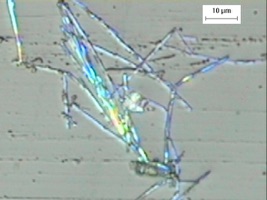







The Nanotechnology Center 2019




Some Key Research Teams at WFU
A key aspect of any nanomaterials synthesis program is the characterization techniques utilized. We specialize in electron and scanning probe microscopies, scanning probe spectroscopies, and a number of optical techniques such as Raman, Luminescence, Pulse-Probe, Time-of-flight, and z-scan for nonlinear effects. We also have a number of long standing collaborations in Raman, HRTEM, EELS, and XPS-UPS, to further our characterization methods.

A Materials Gallery
Courtesy of the Carroll Group
GaN nanowires
MWCNT
PEDOT nanotubes
Atomic Resolution on a SWCNT
At the core of most good nanotechnology/nanoscience efforts, is the design and synthesis of new materials. Nanoscale design of materials such as polymers and matrix composites, assemblies of nanomaterials into specified symmetries and orders, or the development of entirely new classes of nanomaterials such as carbon nanotubes, metal nanoparticles, and quantum dots, is the essence of nanoscience. These form the creative palette on which our technologies and new medicines will be based.
At Wake Forest University, the faculty of the Nanotechnology Center are widely recognized in nanoscale materials synthesis and processing. From conjugated polymer design, novel variants of carbon-based nanostructures (such as doped carbon nanotubes), and quantum dots of the perovskites for lighting and solar applications, to polymerized fullerene derivatives, arrayed nano-particles of metals and bimetallic structures (plasmonic meta-materials), and novel cage-like structures for use in catalysis as well as fuel reforming, materials synthesis in an area of exceptional expertise at WFU.
Dr. Richard Williams: Fast spectroscopy in nanoparticle / nanofilm coatings for scintillators
Dr. Abdou Lachgar: Cage like materials for storage and ion transport
Dr. David Carroll: Carbon nanotubes, synthesis of new polymers for OPV, nanoparticle synthesis (including semiconducting and metallic), arrayed nanomaterials and coherent behavior. New ceramics such as CZTS for solar.
Dr. Scott Geyer: Novel quantum dots, quantum dot based photonics and quantum dot based devices.










